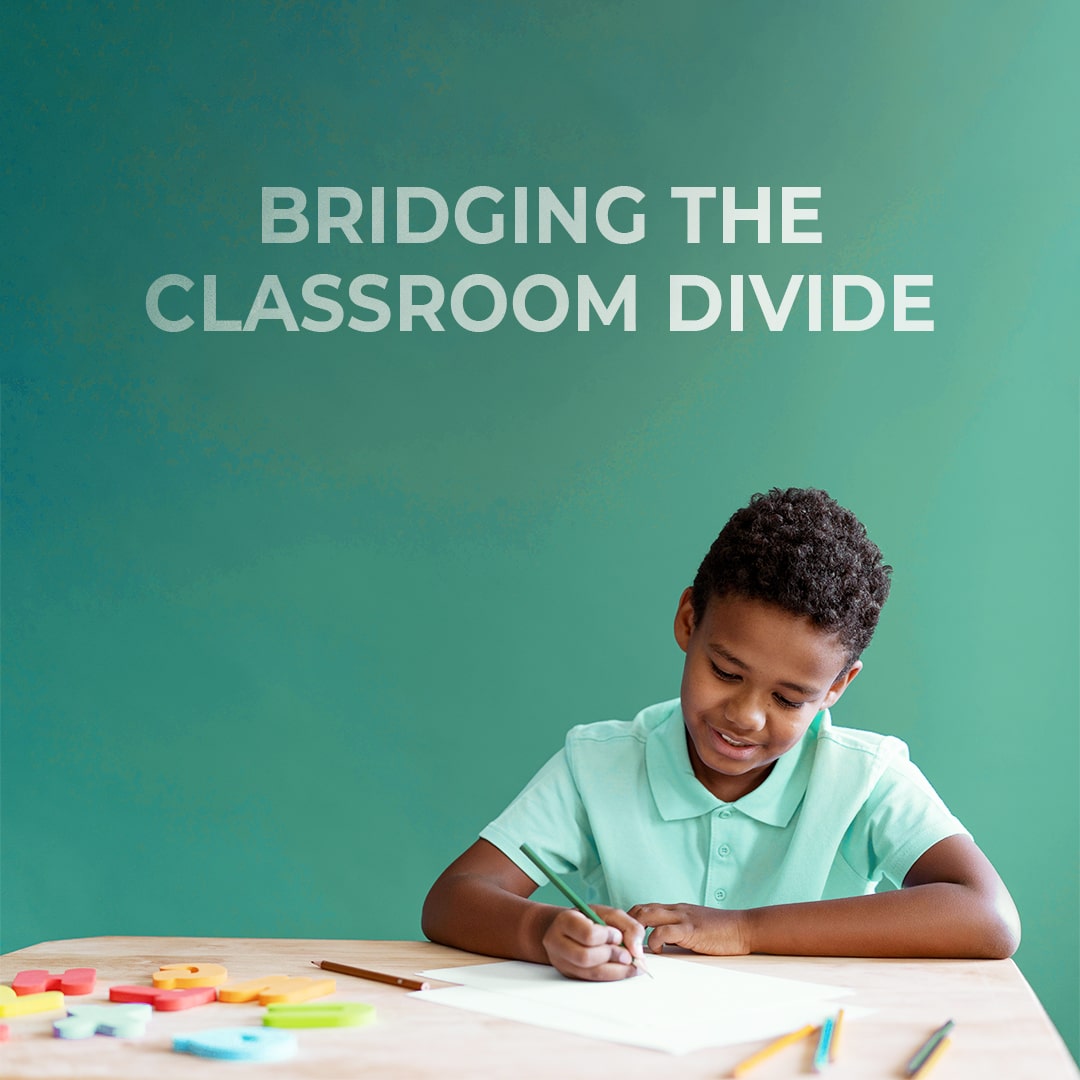Looking at the polished windows, the spotless buildings and the runway-ready uniforms of today’s first-tier schools one would think the scenes from the father of the Indian Constitution, Ambedkar’s school days, are long-forgotten—But are they?
A closer look into the classroom shows a different scene. The classroom divide—deepened by the pandemic—is still present, with more facets than ever. This divide is not only about the privileged versus the under-privileged, although that still prevails. There are other rules and behaviors within the school system that put some students at a disadvantage before they’ve even entered the workplace and embarked on adult life. This unequal system affects different groups of students and becomes the first of many obstacles they have to consequently face in the real world. A global issue that transcends national boundaries, this divide is not tangibly seen, it’s systemic and most people do not even realize it’s present. Sometimes, the victims also fail to recognize that it’s happening. This is why it is important to discuss, debate, and bridge this gap.
The school is often considered a child’s second home and first real social setting. We strive to make it a safe space where children can learn and grow, in preparation for the real world. It is a place where the values of equality and justice are engraved in the young minds, and where they have their first experiences of friendship, sharing, and competition. It is a place that was created to bring out the best in our nation’s future. However, the way in which the school system is used—or abused—stands to do more harm than good.
The Physical Divide
One such divide is visible on entering the classroom. The students sitting nearest to the front are looked upon with admiring eyes, their work is praised and made an example of. Meanwhile, those sitting at the back are sometimes looked at with disdain. It is assumed that those at the back of the classroom are troublemakers who are not interested in learning, so they are scorned. In stark contrast, those at the front are glorified, and considered smarter as well as well-behaved.
But is a student’s locale the right yardstick to judge their competency or character? What isn’t always considered is the reasoning behind the student’s location in class. They could simply have a more introverted disposition and not feel comfortable being overly visible or speaking up in class. They might not be the first ones to share in experiential learning, but that doesn’t mean their ideas are less valuable. We need to allow students to be themselves, and be more inclusive of the personality types of different individuals.

Another reason may be that the student is not as ‘academically minded’, but that doesn’t mean they don’t share the same potential as others in the class. History is full of people who were dropouts but geniuses. If anything, this indicates that academic tests are not a reliable way to judge a student’s intellect or ability. So, before scorning those sitting in the shadows, let’s look at those in power.
A Uniform System—Or Is It?
School uniforms were introduced to ensure equality and unity in the classroom. They afford a common identity to all students regardless of their socio-economic background. However, it still leads to nonuniform discrimination. How, you may ask? With a uniform often comes different ways to wear it—dress codes.
Dress codes are nonuniform and can reinforce traditional expectations of gender that become ingrained in young minds. For example, asking girls to tie their hair, and boys to keep their hair and nails short reinforces traditional ideas about the way girls and boys should look. There are also certain expectations for how a “good” student should dress—especially for girls. Those with shorter skirts, fancy or dyed hair are seen as troublemakers and may even be shamed.
We should look at ways to adapt our school dress codes to ensure they don’t foreshadow binary, heteronormative, and patriarchal practices, and instead embrace individuality and inclusivity. We need to implant equality and acceptance into the minds of the younger generations from the start, but that won’t be possible if they are made to follow practices formed on the basis of binary gender roles unquestioningly.

The EWS System
The Indian Constitution grants equal access to quality education for all up to the age of 14. All privately owned schools have to commit a minimum of 25% of educational seats to be reserved for children belonging to the economically weaker section (EWS) and exempt them from paying tuition fees. While a good policy in theory, in practice there are flip sides to this system which further add to the classroom divide.
The first evil is corruption. This system is implemented through a draw of lots after appropriate documents have been verified. However, such documents can be forged which has often resulted in more affluent classes taking advantage. News reports about hundreds of fake admissions under this quota are a norm every year. This behavior means someone from a poorer background loses out on an opportunity that could have changed their life, and more affluent children win in the competitive race of being admitted to a good school—again.
The second is class prejudice. When an underprivileged child does benefit from the EWS scheme, it can be a battle to prove they deserve to be there. And I am speaking from experience. It is always in the back of our minds that others believe we are there only because someone granted us a favor. Stereotypes ranging from family background, the supposedly violent and rude nature of poorer classes, and a perception that we do not value education are set in the minds of teachers and students alike.
The assumption that a child belonging to this stratum of society cannot be good at academics and will be rude is all too prevalent. So much so that when I, one of the top-performing students, told my friends I gained admission through the scheme, they were surprised and flustered. They could not believe that a student from the EWS category could excel. It was quite normal for a teacher to ignore an EWS student in the classroom owing to the same assumption. I was passed over for opportunities in extra-curricular activities, while a student with richer donor parents was selected multiple times. The effect this has on a young mind is not pretty, as their worth is reduced to their family income rather than their merit. I remember feeling under confident at points, scared to fail and appear too nerdy at the same time. This kind of environment can be discouraging for students, preventing them from grasping opportunities for fear of being alienated. Seemingly, this policy is achieving the opposite of what it was intended for.

Students from economically weaker sectors of society are just as smart and capable as other students, and chances are they cherish the opportunity to write a fresh chapter for themselves more. For our nation to fulfil its potential, we need our teachers to motivate, encourage, and put in the extra effort to ensure equitable distribution of opportunities.
The EWS system is a chance for a child born into poverty to break the cycle and make a different life for themselves. If they never get this opportunity because the parent of a richer child can pay for the forgery of documents, or if they face alienation in the classroom due to their background, then we lose the benefits that this system was meant to provide, not to mention the deterioration of mental wellbeing and social progression of all young people that such inequalities lead to in India.
As schools reopen post-pandemic, the classroom divide will be deeper than ever. Many students will experience a gap due to the lack of connectivity in the digital world, and gender roles might have been reaffirmed in many minds due to the lockdown and the return of the image of women as primary caregivers. Ensuring an equitable and inclusive environment in the classroom will take conscious and dedicated efforts. Student activists all over the world today are calling for authorities to take notice of this priority issue. Students and socially aware citizens in Kenya recently came forward proclaiming, “We will learn for free and by force,” reminding us of the right to accessible, quality education. Creating a world which is equal, just, and fair for all will begin with tomorrow’s leaders—our children. We need to stand together as parents, teachers, and administration to critically examine our systems and rebuild them where they allow divides to occur. The future is now.



